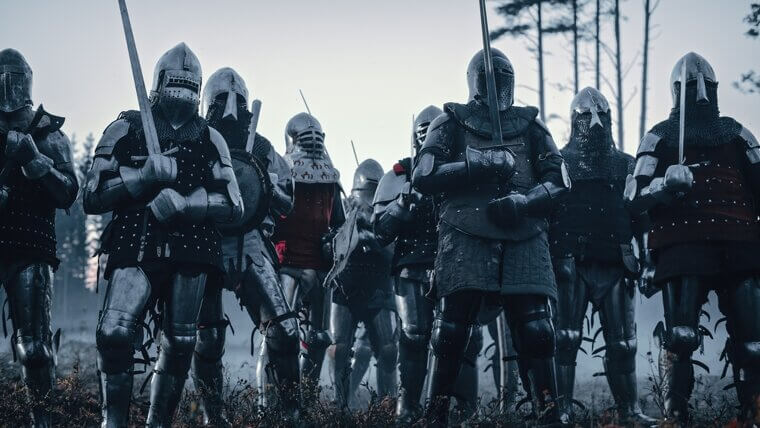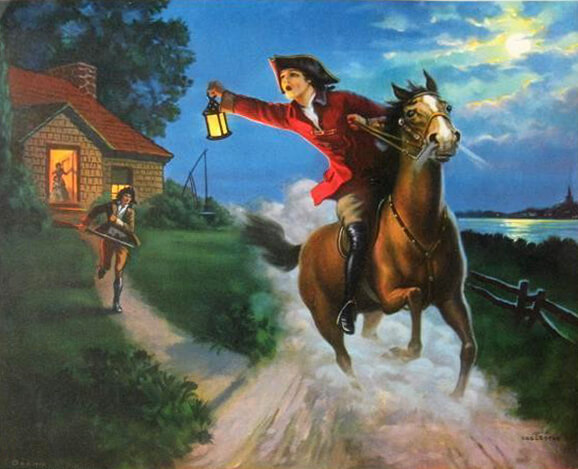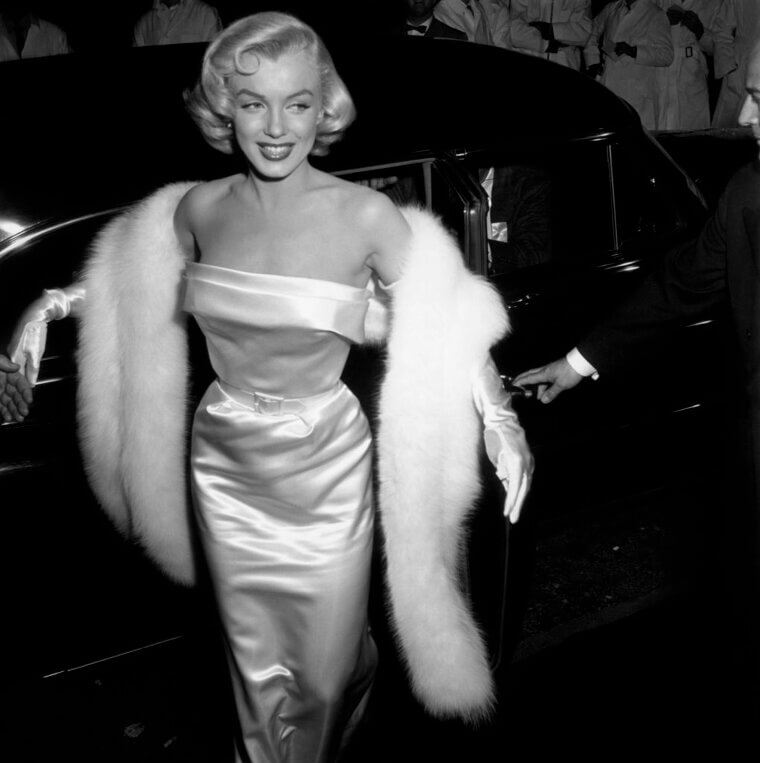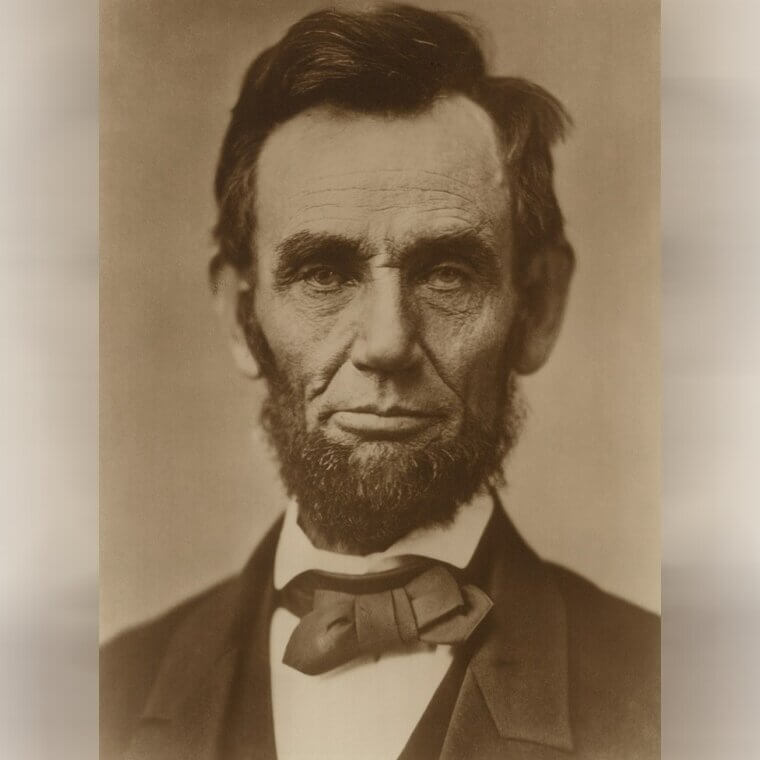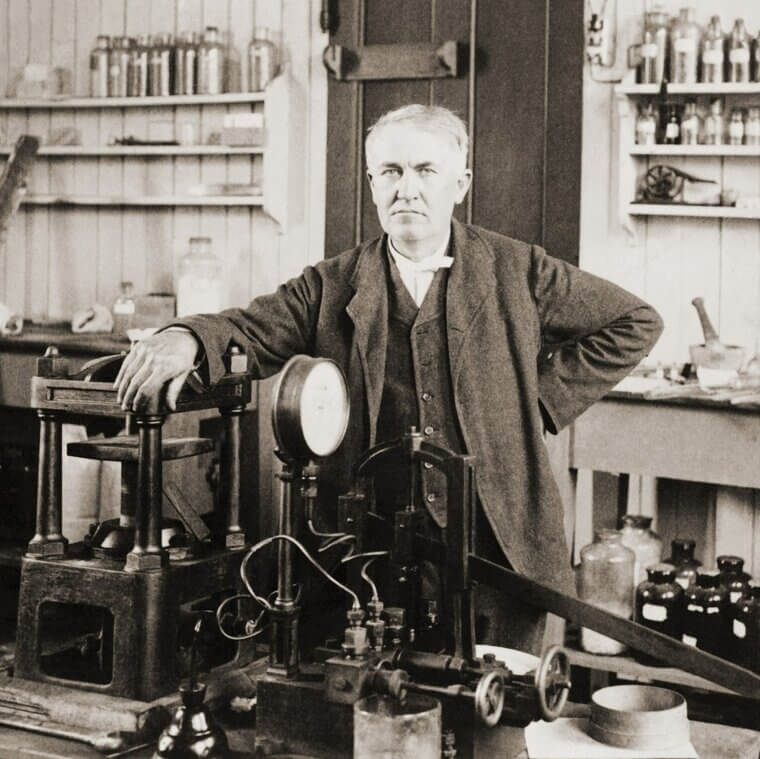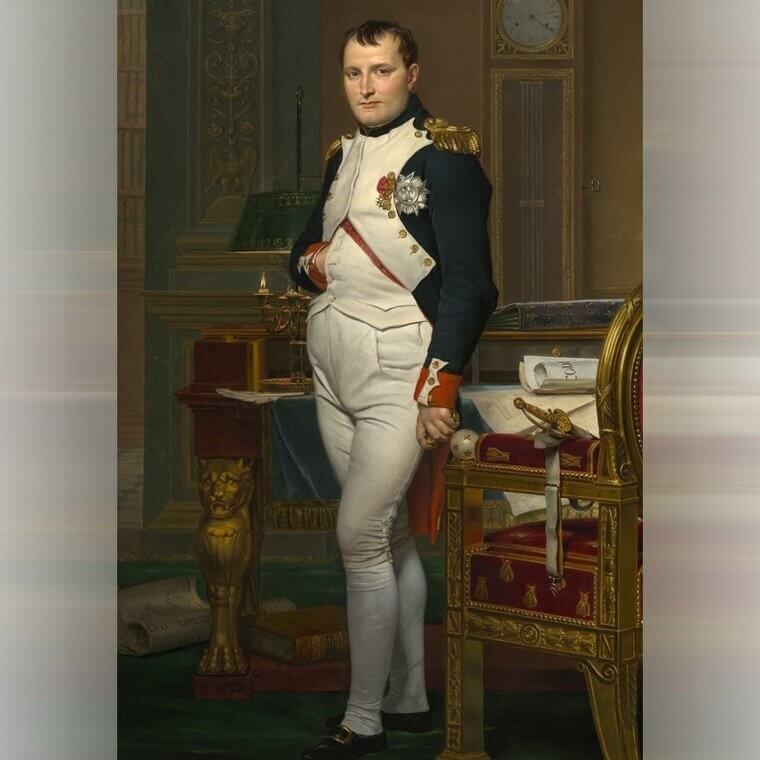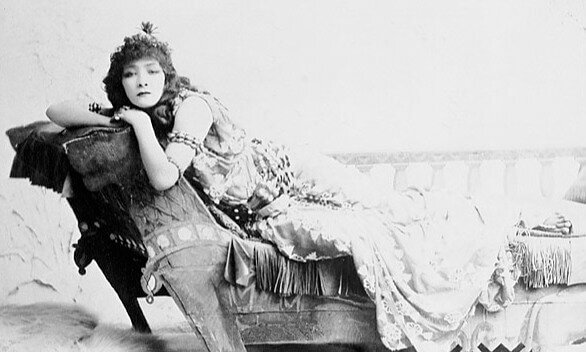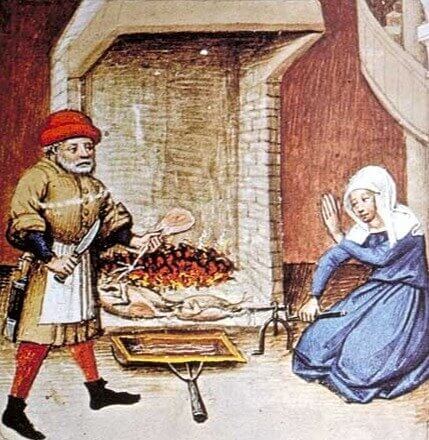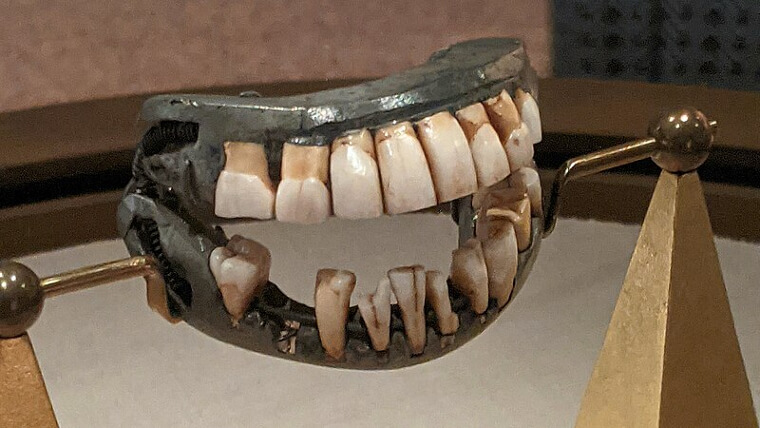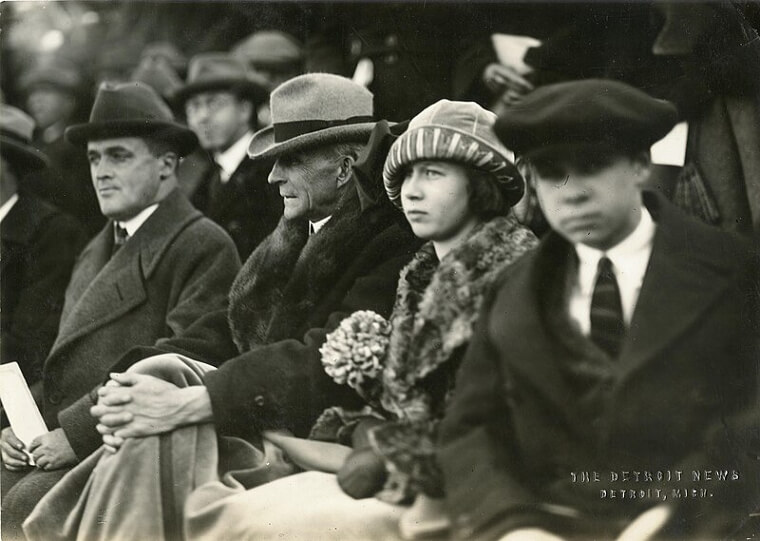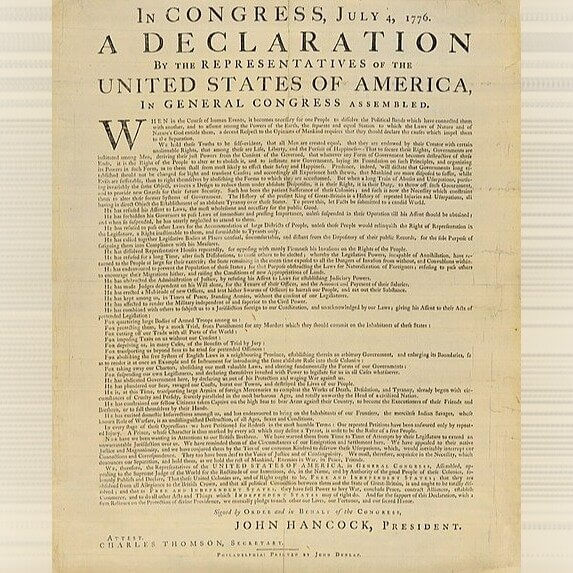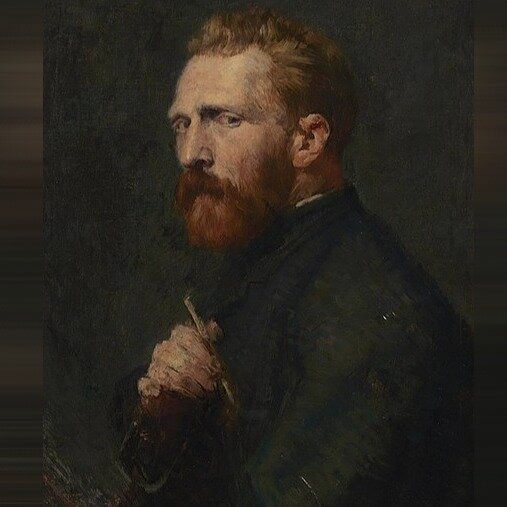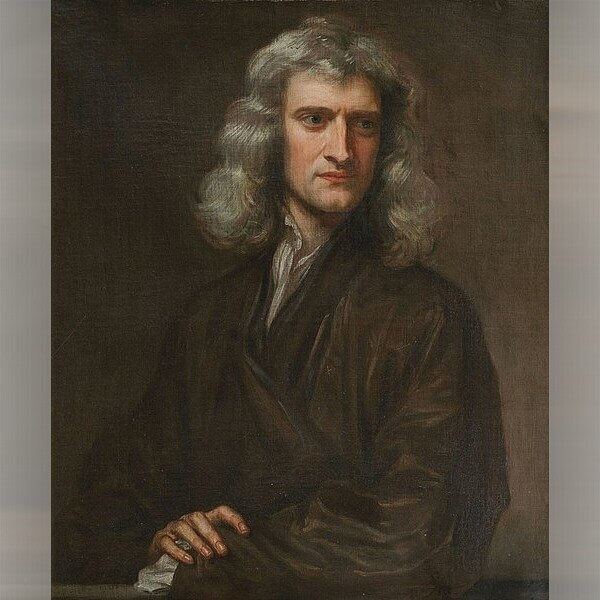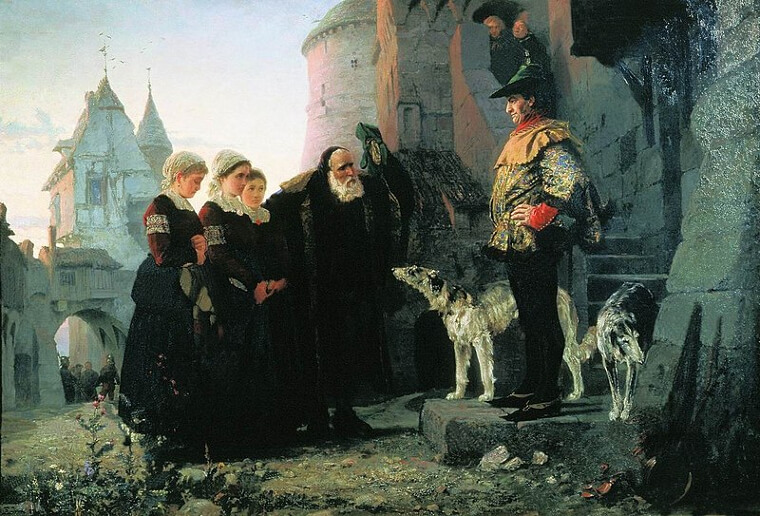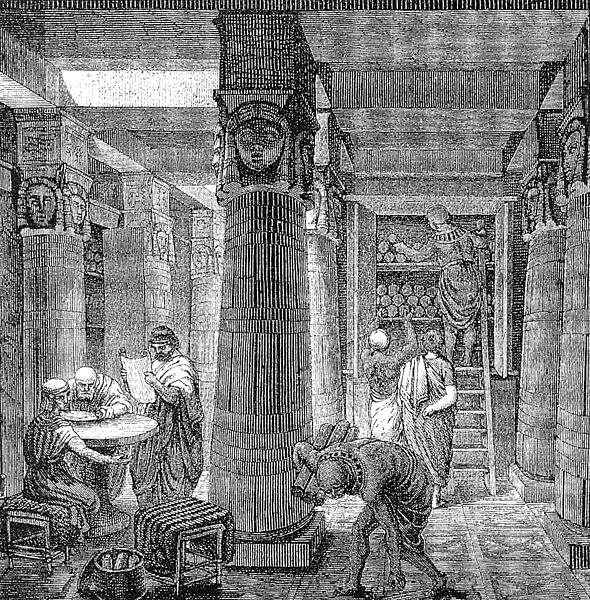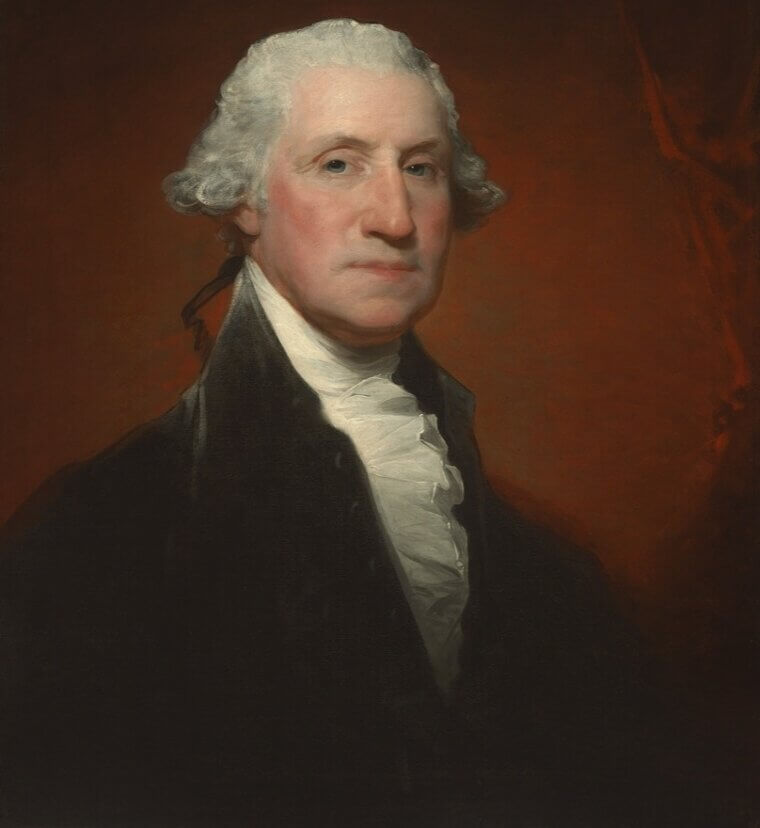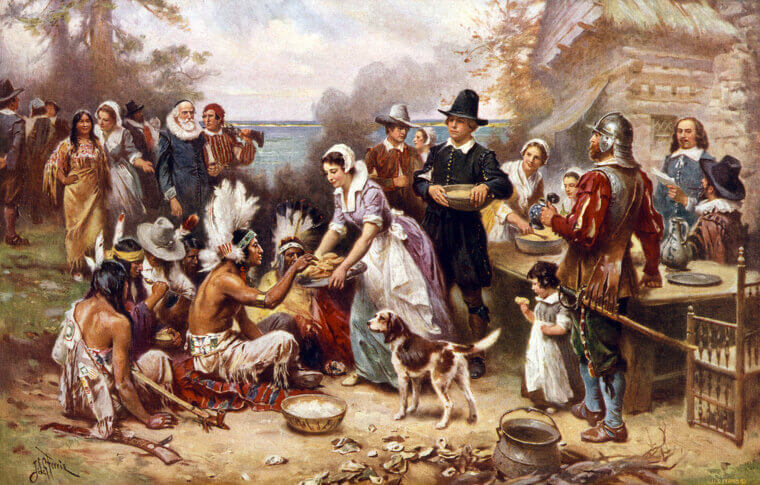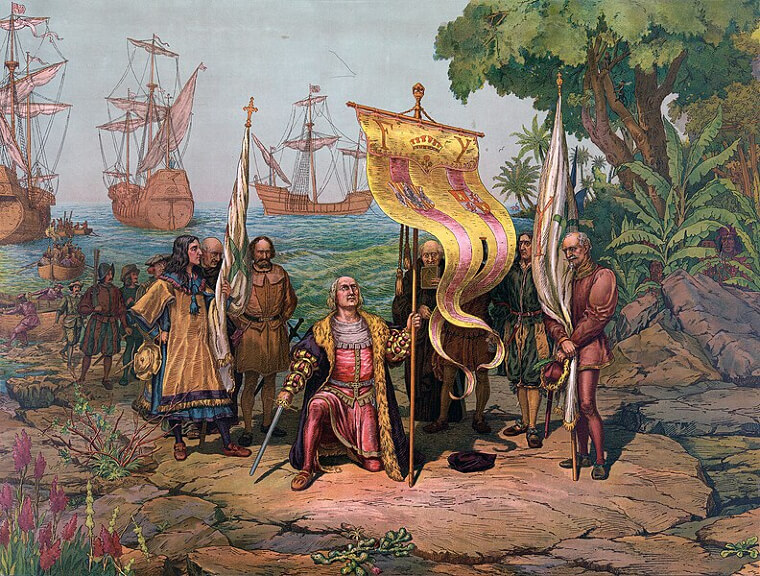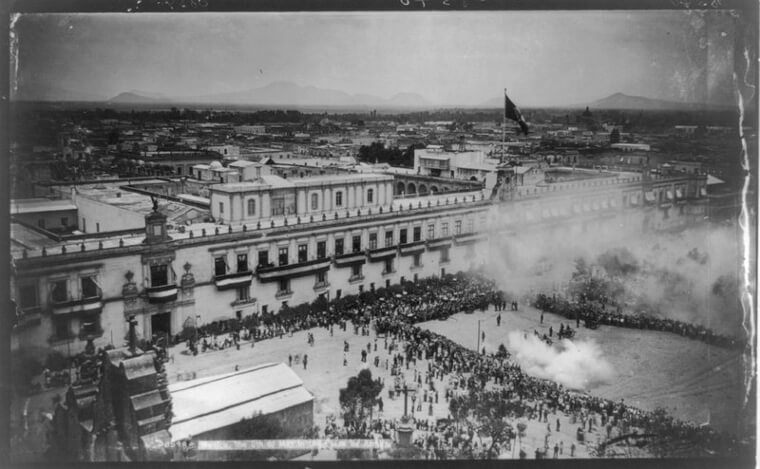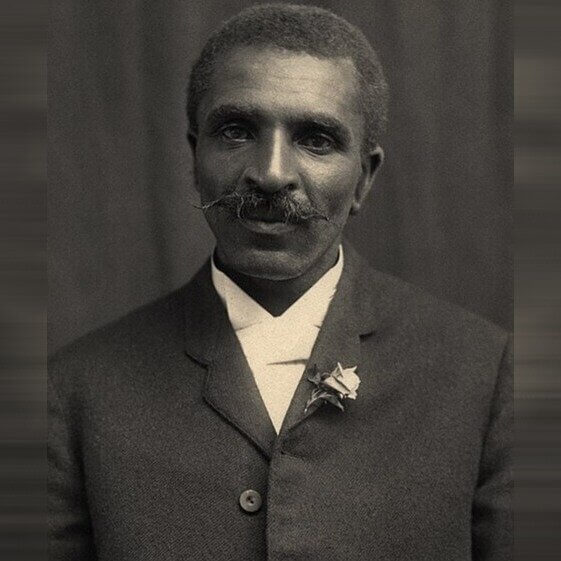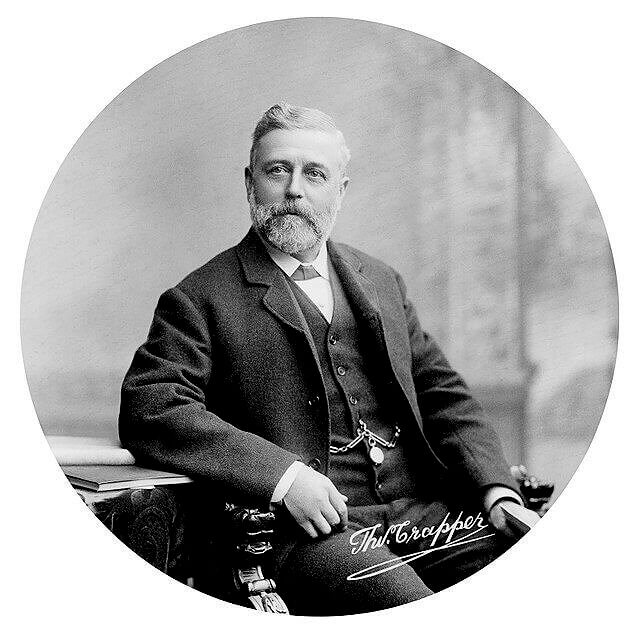Knights Weren’t Known For Chivalry
At least within the context of what we understand “chivalry” to be today. The idea of noble knights who fight for king and country, are impeccably polite, and have hearts of pure good isn’t all based in reality. While there may have been some who indeed carried themselves in such a way, the reality is far more brutal. Most knights were actually mercenaries hired to bolster the armies of royalty and nobility. They often preferred brutal violence over honorable combat as a method to swiftly end the conflict.
Perhaps most contradictory was their relationship with women, as they were only ever courteous to ladies of the court out of respect for their name, while the lower class saw a violent side to them.
Pandora’s Box Wasn’t A Box
Much of Greek myth and culture is muddy in modern eyes, with many details being confused, exaggerated, and misconstrued. There are many reasons for this, such as the Greeks themselves retelling and changing stories over the course of their history and the misrecording of their history by later groups. One example of this is found in the story of Pandora’s Box. Renaissance Humanist philosopher Erasmus had a collection of writings that included the story, but he had recorded the myth as referring to a box when it was later found out that the original story referred to a jar instead.
Why this happened is up to anyone’s guess, but it could have been a simple mistranslation or confusion between the many different tellings and similar myths.
Paul Revere’s Famous Line Was Never Cried Out
One of the greatest acts of patriotism described in the Henry Wadsworth Longfellow poem Paul Revere’s Ride describes how the eponymous horseman played a role in the Revolutionary War. famously, he is described as riding in the dead of midnight to warn his fellow patriots of the impending British attack on Lexington, Massachusetts, by crying out, “The British are coming!” While the image is certainly inspiring, it isn’t at all accurate to what happened. Paul Revere was indeed a patriot and worked with an established ring of spies to get information on British activity at the time. He and more than 40 other horsemen took to the night to quickly and quietly spread the message.
The story is often mistold to have him be a single messenger shouting from the hills, but sounding out the message would most definitely have given away their position and let the British know that they were prepared.
Marylin Monroe Was Not Plus-Sized
Marylin Monroe remains an influential woman despite having passed decades ago. There have been thousands of stories passed around about her life and death. Thus, many of these stories have changed, been misconstrued, and retold a thousand times over, and one such story is about the concept that she was plus-sized. This is owed to a misnomer in sizings. Her figure was close to that of an hourglass figure. The argument comes in when she was classified once as a size 12, but this was originally a British size 12, not American. Converted, she would be an American size 10.
This can then be further converted for modern measurements. The size 12 of 1958 would actually be a size 6 in modern vanity sizing, meaning she was voluptuous but in no way plus-sized.
The “F-Word” Isn’t An Acronym
Pop culture has perpetuated the idea that the common F-curse is an acronym. While the idea is certainly fun, there isn’t any actual historical evidence for this. There are many variations of this acronym with the most widely popular being “Fornication Under Consent of King.” The reality is far more tame and realistic, as there is evidence that the word was merely adopted from other languages.
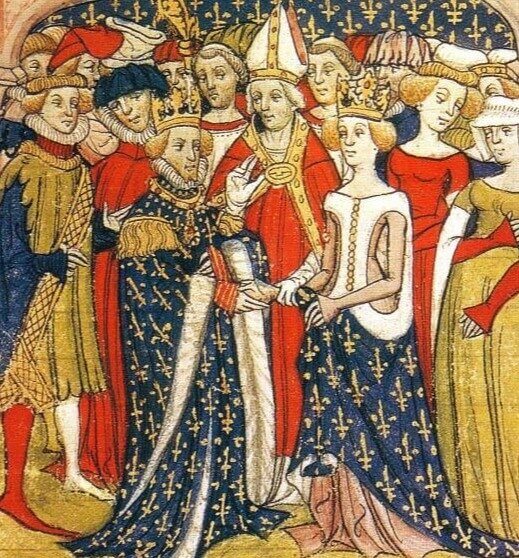
Scandinavian languages such as Norwegian, Middle Dutch, and Swedish all have similar words with the same meaning and use as the modern English word, such as “fokken,” “fukka,” and “fokka” respectively.
President Abraham Lincoln Wasn’t Always a Believer In Racial Equality
While he would later go on to outlaw slavery, Honest Abe didn’t initially have the views that would later shape his time in office. It’s often misconstrued that President Abraham Lincoln was always a paragon for good, but this wasn’t always the case. He is quoted to have said, “I will say then that I am not, nor ever have been, in favor of bringing about in any way the social and political equality of the White and Black races.” This was said during a political debate earlier in his career, during a series of debates held during the Illinois race for US Senate. He further went on to explain that he didn’t believe black people should have the ability to vote, intermarry with white people, or be allowed to serve on juries.
As time went on, his views changed. He declared that every black man who fought in the Civil War should have the right to vote. By realizing a change needed to happen in himself, he could bring about the change needed for the country.
Thomas Edison Didn't Invent the Light Bulb
It’s widely believed that Thomas Edison is the father of modern lighting, having delivered to the world the first electrically-powered light bulb. His crowning glory, as it were, was actually a product of another inventor and longtime rival: Nikola Tesla. It is now widely known that Thomas Edison, while he was a good inventor in his own right, was a thief who stole credit for many different ideas and patents. Nikola Tesla was famously generous with his inventions and ideas, often to his own detriment, and this is one example.
Failing to get the patent himself, Edison was able to swoop in and claim it and forever have it become his crown glory.
Neanderthals Weren’t Actually Inferior To Humans
It’s a common misconception that Neanderthals were simple and dim-witted. The reality is that they weren’t too dissimilar to us. Evidence has shown that they were skilled hunters and communicators in a structured society where everyone cared for each other. Research has shown that many prehistoric peoples were not as primitive as we might have previously believed, with links between language development and tool-making becoming more prevalent. The core idea is that as people developed tools and tool use, there came a need to share those ideas with others, which then created better forms of communication and subsequently caused community ties to strengthen.
While the full story of the Neanderthals hasn’t been revealed yet, it’s becoming increasingly clear that they weren’t too different from us and certainly not inferior.
Napoleon Didn’t Have a Napoleon Complex
From caricatures to history lessons, we all have this idea that Napoleon Bonaparte was a short, fiery-tempered man. There are countless descriptions of his tempers, height, and insecurities, with many rumors claiming him to be quite tiny. However, this is likely well-attributed to a massive smear campaign by the British army to make their enemy seem less scary. Napoleon was known to be a great leader and strategist and was rightly feared, so in an attempt to bolster the troops, the British began spreading propaganda about Napoleon’s insecurity about his tiny height. The truth is that Napoleon wasn’t all that short, measuring at 5’6 at the very least, which is a fairly average height for the time period.
The propaganda became so widespread and was effective and undermining the emperor in the eyes of his enemies that they came to fear him less and less, which was the British’s plan all along.
Cleopatra Wasn’t Even Egyptian
As a former ruler of Egypt, it’s only natural to assume that the famous queen was herself Egyptian. This is a common misconception and one that originates from assumptions and a lack of understanding of her background before she began to rule the nation. Queen Cleopatra wasn’t the ruler of Egypt as we understand it today, but was rather the last ruler of the Ptolemaic Kingdom of Egypt, which was actually an extension of Greece at the time.
Cleopatra herself was a member of the Ptolemaic dynasty, making her Macedonian Greek in descent.
The Jonestown Massacre Did Not Use Kool-Aid
Kool-Aid took a knock following the events of the 1978 Jonestown Massacre. This terrible day in history saw over 900 people lose their lives to the Peoples Temple cult. While it's believed that this was a mass suicide led by cult leader Jim Jones, wherein his followers drank poisoned Kool-Aid, this isn’t true. The reality is that the drink used was Flavor Aid, a similar drink that was poisoned. Additionally, most people didn’t choose to drink willingly and were instead coerced to drink under threats of violence.
Those who still resisted were instead injected with cyanide by more loyal followers.
Medieval Peasant Food Wasn’t Flavorless
Many believed that only the medieval wealthy had access to fine dining and flavorful food, while the peasants ate whatever they could scrounge together. While that may be true in certain contexts, this wasn’t always the case. There were many forms of spice, produce, and meats that were readily available for the peasantry of the time. Some of the most common seasonings included pepper, cinnamon, cumin, cloves, and cardamom. While salt may not have been easily accessible, as it’s true that that particular seasoning was kept scarce by the wealthy, there were plenty of other options to add flavor.
Other recipes from the time also use honey, ginger, vinegar, and sugar to further diversify their flavors. Further, depending on where they lived, they might have had access to a variety of different meats and ingredients to add to the palette.
George Washington Didn’t Have Wooden Dentures
It’s a popular belief that George Washington used wooden dentures because of his terrible dental hygiene. This was further expanded upon as a rumor when people claimed he would buy real teeth from those selling them. This small rumor is only partly true. He did eventually have to get dentures because of his poor dental hygiene; however, his dentures were made out of ivory and gold.
George Washington was one of the richest people in America at the time, the rumor likely started from the staining of his dentures from his habitual wine drinking.
Henry Ford Didn’t Invent The First Car
Henry Ford is credited for many things: founding Ford Motors, revolutionizing the workweek, and making affordable motor vehicles for the common person. However, many get swept up in his accolades and often attribute him as the inventor of cars in general. The reality is that while he did a great many things for the motor industry and industry in general, the famous Model T car would be released over 20 years after the first car was created.
The invention is attributed to Karl Benz, who would go on to found Mercedes Benz.
Albert Einstein Wasn’t a Bad Student
One common myth is that Albert Einstein didn’t perform well in school. This has led to many different stories and tellings of him being able to achieve academically despite setbacks from those above him, but this isn’t exactly true. The idea that Einstein was a bad student has many possible origins, but it’s likely to be a combination of exaggeration and misunderstanding. He was initially rejected by the Federal Institute of Technology in Zurich when he first applied, but this was attributed more to his age, as he was only 16 at the time despite meeting all other requirements.
His old report cards were also uncovered at one point, and it was thought that he was getting low scores. As it turns out, this is just a misunderstanding of the grading system at the time, as achieving scores of 1 on a scale of 1 to 6 was actually a good thing at the time.
Charles Lindbergh Wasn’t the First Pilot to Cross The Atlantic
Charles Lindbergh may have accomplished a great feat by being able to pilot a plane across the Atlantic Ocean, and it’s commonly believed he was the first to do so. However, this isn’t the case, and he actually took credit for the feat from two pilots who had performed the feat almost a decade prior. Two British pilots were the first to make the voyage in 1919 in a British Air Force plane. While Charles Lindbergh would go on to take credit for the feat, he wasn’t even the first.
Mere weeks after the first pilots made the trip, another crew would do the same thing and then make a return flight back to Britain.
American Independence Day Was Supposedly July 2nd
July 4th is celebrated as the day John Hancock and 55 others signed the American Declaration of Independence. The event was prolific, and the moment was captured by John Trumbull, who created a painting that still hangs in the Grand Rotunda of the US Capitol today. However, not many know that the order of proceedings was already underway well before then and that the motion had already passed as of July 2nd. This is evidenced by John Adams sending a letter to his wife claiming that he believed that July 2nd would be “celebrated, by succeeding Generations, as the great anniversary Festival.”
July 4th is instead celebrated as that was simply the day that the document was completed. The signatures would only finally be collected on July 8th, when official celebrations started in 1776.
Wall Street Employees Didn’t Jump From Buildings
The Wall Street Crash of 1929 had many implications for the people at the time. Suddenly, thousands had lost their life savings and life went from happy and comfortable to difficult to make it from one day to the next. Because of all the stress and pressure that people were suddenly under, this led to an unfortunate spike in people taking their own lives. A rumor would begin to spread of Wall Street employees jumping from buildings at work to escape the stress.
However, while many did take their lives at the time, some infamously so, nobody was recorded jumping to the street below them.
Vincent Van Gogh Didn’t Cut Off His Own Ear
Vincent Van Gogh is one of the most famous artists with many stories and rumors surrounding his life and works. One such rumor is that he removed his own ear and mailed it to a woman in a bout of mental anguish. One of his own pieces, which is a self-portrait with his one ear bandaged, seems to lend credence to this, but this isn’t actually what happened. Many historians now believe the story to be made up by his friend and rival Paul Gaugin, a fellow artist.
The more believable story is that Gaugin had cut off Van Gogh's ear, by accident or intentionally, and then told the story that he had done it to himself when not sound of mind.
The Spanish Flu Has Nothing To Do With Spain
The Spanish Flu was a devastating pandemic that swept through the nation and caused the deaths of around 50 million people in 1918. Also called the three-day flu, the popular notion at the time was that the flu originated in Spain, which immediately caused a stigma to rise around the country. As it turns out, the name was simply a way to create a false impression around the country, as they had chosen to remain neutral in World War I.
While the exact origins are unknown, it’s believed that the flu actually started in Fort Riley, Kansas.
Americans Were Not The First Democratic Country
While the US was famously made into a democracy in 1781 with the Articles of Confederation being put into effect, they were hardly the first people to put a democratic government into effect. In fact, the word “democracy” comes from the Greek “demokratia,” who used the same form of government as early as 507 B.C. Additionally, in 1215 A.D., citizens were granted individual human rights and personal freedom under the Magna Carta.
The Greek form of democracy was also very similar, with Legislative, Executive, and Judicial branches of government.
Isaac Newton’s Eureka Moment Isn’t What We Think
We all know the classic story of how Isaac Newton came to formulate his theories on gravity, with how he was taking a stroll one day, sat down beneath an apple tree, and the infamous apple fell on his head. While this makes for an excellent story, this isn’t entirely truthful to the real story. Over the course of several years of his life, he would develop theories and perfect his equations on the forces and effects of gravity.
Historians have yet to discover any actual mention of an apple falling on his head in his early work, and it’s believed that the story was likely added after the fact to embellish it all for the sake of a narrative.
The Great Chicago Fire Wasn’t Because of a Cow
In 1871, a massive fire broke out in Chicago and killed around 300 people as it swept through the city for two days. As people were scrambling to save the city and looking for a source, a journalist wrote that the entire disaster was caused by a cow belonging to one Mrs. O’Leary had kicked over a lantern, which started the blaze. This was later disproved and proved to be a result of the anti-Irish sentiment of the time, as the citizens of Chicago were looking for something to point the blame at.
To this day many still believe the lie that was told at the time, leaving Mrs O’Leary no consolation.
The Vikings Didn’t Have Horned Helmets
While they might look cool and theoretically work well for intimidation, Vikings never actually wore horned helms. The appearance of the Scandinavian warriors and raiders has greatly been influenced by art and pop culture, with their true image being warped in many modern depictions. Vikings were said to actually choose to go helmless or wear leather head coverings more often than not, with no horns in sight. The addition of horns is largely attributed to Gustav Malmströmstems, who depicted them with horned helmets in his art.
There is also some evidence for it being propagated by the helmets worn in operas that included Viking myths and stories.
Shah Jahan Didn’t Have The Hands of the Taj Mahal Builders Removed
It’s a commonly held belief that the builders of the Taj Mahal had their hands chopped off by then-emperor Shah Jahan. The Taj Mahal was a mausoleum and memorial to his late wife who had passed in childbirth, leaving Shah Jahan inconsolable. The story is that once the magnificent building was constructed to properly represent the memory of his beloved, he then had hands of the builders chopped off so that they might never build anything like it again, so as to further cement his wife’s legacy.
This is entirely false and is easily disproved by visiting the nearby settlement of Taj Ganj. Taj Ganj was the home of the workers who built the Taj Mahal, and many of their proud descendants continue to practice the same line of work in the modern day.
Armstrong’s Famous Quote Isn’t 100% Accurate
On July 20, 1969, Apollo 11 touched down on the moon, bearing the first people to make the journey. After radioing in to confirm that they had landed, Neil Armstrong would go on to deliver a famous line, the first words to ever be spoken by a man on the moon. “That’s one small step for man, one giant leap for mankind,” is the quote that we all know, but Armstrong actually disputes this.
While the difference in quotes is minor, it does actually change the way it rolls off the tongue, as he claims to have actually said, “That’s one small step for a man, one giant leap for mankind.”
Vomitoriums Were Not For Vomiting
Many continue to assume that the modern term “vomiting” is in some way linked to the Roman vomitoriums. While the comparison is natural, given the root words and some support from the idea that the Romans loved their drinking, these were not places they could purge before returning to their wine. The term the Roman verb translates to “to spew forth” and is used to describe the entrances and exits from their many stadiums and theaters.
These were specifically designed with the large, rowdy crowds in mind and how they would surge in and out in droves for exciting performances.
Jus Primae Noctis May Have Never Actually Happened
“Jus primae noctis”, or “prima nocta”, was a concept in feudal times that allowed a lord to claim a virgin bride as his own before she could be married to someone else. Perhaps one of the most well-known examples of this was in the film Braveheart, as it is one of the inciting incidents when the English violated Sir William Wallace’s wife. While there is mention and evidence of the practice existing and being lawfully protected, there is no historical evidence that it was ever carried out or enforced.
The closest “evidence” found are mere renditions of the acts found in written and painted works out of an artist's imagination, but there hasn’t been a particular case that gives real credence to it ever being acted upon.
The Fall of the Great Library of Alexandria Was Greatly Exaggerated
There is much debate between historians about the relevance, greatness, and fall of Alexandria’s great library. The decline and eventual burning of the library is debated, as many of the details have been swamped in hyperbole since its fall. The library was vast for its time, and it was a devastating loss of written records. However, much of the knowledge housed within the library wasn’t actually lost. Many exaggerate that the burning of the library set civilization back generations, but the reality is we only ever lost what was written down. While there were certain aspects that were lost, the decline of the library was happening for many years and was already slowly killing the library and records.
With Christianity at the time forbidding the spread of “pagan” knowledge, much that was going to be lost in the fall of the library was already lost for years at that point.
George Washington Wasn’t Always Truthful
A story that gets drilled into the heads of students learning of the founding fathers is that of George Washington and the cherry tree, with the famous line often quoted as “I cannot tell a lie… I cut with my hatchet.” While this paints a great picture of George Washington as a man who was virtuous and never lied, this was later admitted to being a story created by his first biographer. Mason Locke Weems was authoring his first biography for the recently passed Washington. He needed a story that would raise him and his fellow founding fathers to heroic status.
He wanted to make them symbols for the American people. This is but one story that was fabricated to make the founding fathers more infallible and perfect.
The Brutal Truth Behind Thanksgiving
The story is told that the pilgrims who had come to settle in America held a massive feast with the native people to celebrate their help in ensuring the pilgrims survived. Having taught them to grow crops, survive the harsh winters, and save the Plymouth Colony, the two groups join in a yearly celebration to give thanks to their saviors and put aside their differences. The relationship between the pilgrims and the natives is much bleaker, with the celebration having a darker history. The two groups have a swiftly deteriorating relationship with one another and were quick to anger at any sort of affront.
When William Bradford found one of his men murdered, he reacted by wiping out the Pequots and burning their entire village down, after which he held the first Thanksgiving feast with his men.
Christopher Columbus Didn’t Discover America
The Italian sailor is often credited with discovering America after seeking and failing to find a faster trade route to India. After landing where he thought was his destination, many think him to still be the first to ever set foot on American soil. This is obviously not the case, however, as there were already many separate native and indigenous cultures in the region and spanning all across America.
Columbus isn’t even afforded the accolade of being the first foreigner, as the first explorer to ever set foot in America was a Norse explorer, Leif Erikson, who had sailed there many generations ago.
The Real History Behind Cinco De Mayo
Much of what Cinco de Mayo originally represented and celebrated has been forgotten or misremembered by many. Nowadays, many believe that it celebrates the Mexican army’s victory over Spanish monarchs at the Battle of Puebla, finally liberating Mexico from Spanish rule. However, by the time his battle happened, Mexico had already been independent for over 50 years. The real history is that the Battle of Puebla was a real battle, fought against the invading French army who were attempting to seize control of the free nation. Cinco de Mayo, as it is today, isn’t even considered by many Mexicans to be a Mexican celebration.
It is observed more in the US as a celebration of Mexican-American heritage. The city of Puebla still celebrates the El Día de la Batalla de Puebla, which celebrates the victory over the French.
George Washington Carver Didn’t Create Peanut Butter
The famous botanist is credited for many things, one of which is the creation of peanut butter. While Carver did do many things with peanuts, he was actually not responsible for creating the lunchtime spread. Some of the earliest references to people taking peanuts and grinding them into a paste come from the Inca and Aztec civilizations, well before Carver’s time.
More recently, the recipe for modern peanut butter was patented in 1884, but Carver had no part in that.
Thomas Crapper Didn’t Invent the Flush Toilet
As disappointing as it may be to learn that it isn’t true, Thomas Crapper wasn’t the person to invent the flush toilet that is commonplace today. While he did make many contributions as a plumber to the modern design, the mechanisms in place weren’t his to begin with. The original design dates back to the 1500s, when godson to Queen Elizabeth I, Sir John Harington, described it in a publication as it was installed in his home.
This was the earliest reference to a flush toilet, well before Thomas Crapper’s time.
